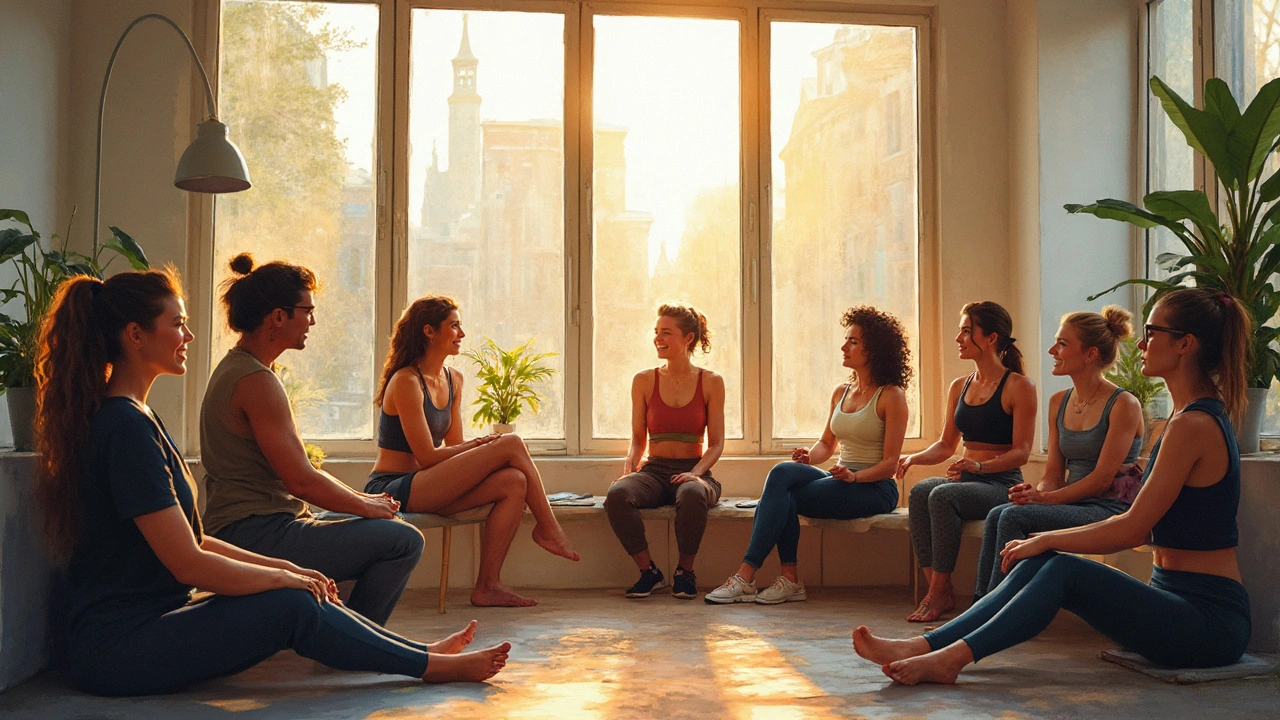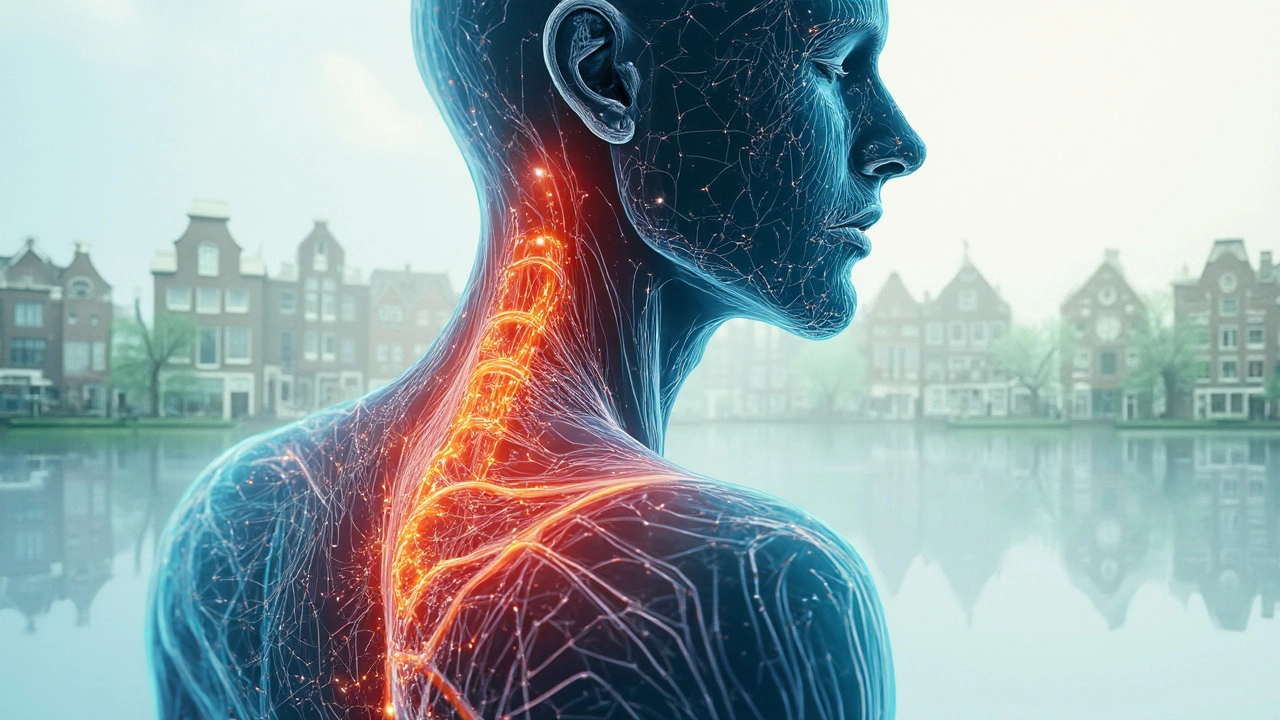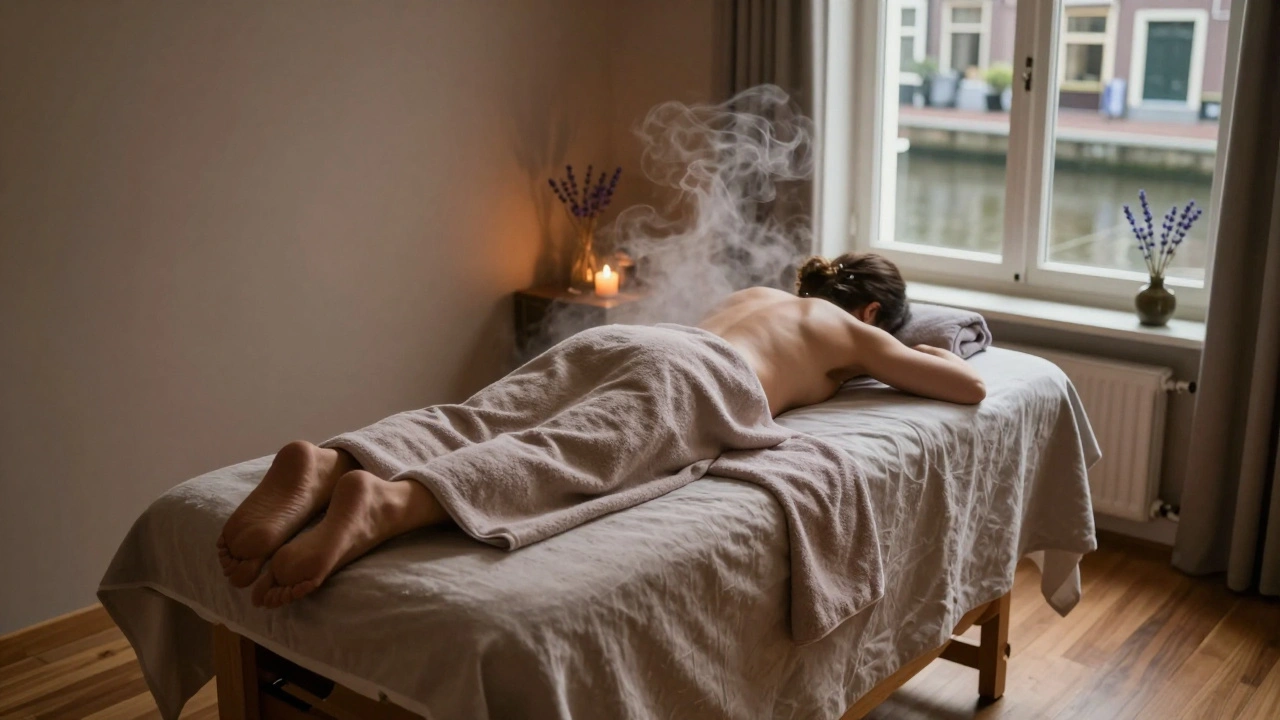Deep Tissue Massage in Amsterdam: Best Way to Relieve Muscle Knots and Chronic Pain

Key Points
- Deep tissue massage is proven to break up muscle knots and ease chronic pain.
- It targets deeper layers of muscle and connective tissue—great for anyone with a stubborn, achy body.
- In Amsterdam, therapists offer versions ranging from classic to sports-specific techniques.
- Sessions can be intense, but the results are worth it: less pain, more mobility, and better sleep.
- Booking is easy and costs vary—safety and therapist credentials matter most.
Direct Answer
Deep tissue massage gets right to the root of muscle knots by using focused, slow strokes and strong pressure on the deepest muscle layers. It’s the best pick if you’re tired of feeling stiff or sore that just never really goes away. With the right therapist, you can expect real relief from tension, faster recovery, and even better sleep. Amsterdam has lots of highly skilled massage therapists ready to help you work out those knots and reclaim your body’s comfort.
Comprehensive Guide to Deep Tissue Massage: Your Go-To for Relieving Muscle Knots
Ever wake up with your neck twisted like a pretzel or your back feeling glued together, no matter how much you stretch? I’ve been there, especially since becoming a mom. Between carrying Matteo around Amsterdam’s cobbled streets and occasionally testing my ‘yoga skills’ while chasing after him, muscle knots started sneaking up everywhere. If you’ve ever felt like your muscles are throwing a temper tantrum, deep tissue massage can really change the game.
There’s something special about this kind of massage—it’s not the gentle, spa-like rub you might get with Swedish styles. It’s the type where a skilled therapist really gets into the tough spots, working layer by layer until the tension releases. In Amsterdam, I’ve met dozens of people who rely on deep tissue work to recover from marathon training, cycling along the Amstel, or just recovering from sitting slouched at your laptop all day (yes, guilty). Not only can it bring much-needed relief from everyday aches, but regular sessions can do wonders for stress, posture, and even sleep quality.
Muscle knots—sometimes called trigger points—are basically little clumps of stressed muscle fibers. They happen when muscles stay tight for too long, often due to stress, bad posture, overuse, or injuries. Massage therapists have told me that left unchecked, these knots can mess with your range of motion, cause headaches, and sometimes even mimic the aches of old injuries coming back. That’s why finding good, science-backed ways to target them is so important—and why deep tissue massage is quickly becoming the first thing people Google when they’re too stiff to even enjoy a bike ride through Vondelpark. Ready to dig in and see what all the fuss is about? Let’s go.
Definition and Context: What Is Deep Tissue Massage and Why Does It Matter?
Let’s clear something up: deep tissue massage isn’t just another fancy wellness trend passing through Amsterdam. It’s a therapeutic technique with real, scientific muscle behind it. The goal here isn’t just to help you relax—it’s to tackle the underlying problems that keep your body knotted up and sore. Deep tissue massage uses slow, deliberate strokes that apply firm pressure. The idea is to physically break up stubborn knots or adhesions (think: muscle ropes and sticky scar tissue) hiding deep beneath the surface.
This method is completely different from the light, gliding motions you get with a Swedish or relaxation massage. Therapists use their knuckles, elbows, and even forearms to apply targeted pressure right where it hurts most. Here’s the thing: at first, it often feels more ‘intense’ than relaxing, but most regulars say that the relief afterwards is absolutely worth it. It’s not just for athletes or fitness junkies either. Anyone who deals with chronic pain, repetitive stress from office work, or tension headaches can benefit from this focused approach.
Why does deep tissue massage matter? In short, because muscle knots are more than just a little annoying. They can press on nerves, cut off circulation, and send referred pain shooting to other parts of your body. If you’ve ever rubbed your shoulder only to feel your neck start to hurt, you know what I’m talking about. A study out of Harvard Medical School found that people who received weekly deep tissue massages for two months reported major drops in back pain and significant improvements in mobility. Another fun fact: Amsterdam, with its love of cycling and rowing, sees way more cases of tight calves and glutes than the global average, at least according to therapists I’ve spoken with. Deep tissue massage helps get your body back to ‘factory settings,’ so you can move, run, and play with your kids—without pain holding you back.
Benefits of Deep Tissue Massage: Relieve Muscle Knots and Unlock Comfort
If you ask anyone who’s ever had a good deep tissue session, most will tell you the same thing: it’s like hitting your body’s reset button. First, let’s talk about pain. Muscle knots can feel like a little stone lodged deep in your shoulder or back. Deep tissue techniques are designed to break apart those knots, release trapped tension, and allow blood to flood the area, washing away metabolic waste and speeding recovery. Blood flow is a big deal here because it brings the nutrients your muscles need to heal and thrive.
Second, deep tissue massage can seriously improve your flexibility and range of motion. Anyone who’s tried to reach for their toes after a long day on the bike knows that stiffness is no joke. By loosening up those stubborn tissues, you’re more likely to recover mobility, avoid future injuries, and keep your body feeling years younger. I’ve seen people walk into Amsterdam massage studios shuffling like penguins, only to come out later swinging their arms and grinning.
But there’s even more. Deep tissue massage sets off the body’s natural ‘rest-and-recover’ mode, lowering stress hormones and promoting better sleep. Some therapists in Amsterdam say that clients report being able to fall asleep faster and feeling more rested after just a couple of sessions. There’s actual research backing this up: a study from the Touch Research Institute in Miami showed that people who received deep tissue work not only slept better, but they also felt less anxious overall.
And don’t forget mental wellness. Carrying tension is rough on the mind—it messes with your mood, drains your energy, and can lead to more anxiety. That’s why giving yourself permission to schedule a massage isn’t just a treat; it’s a serious form of self-care. Whether you’re a rugby player nursing a tender hamstring or a tired mama like me, those benefits are hard to argue with. Here’s a quick look at what people experience before and after a session:
| Before Massage | After Deep Tissue Session |
|---|---|
| Tense shoulders, limited motion | Relaxed muscles, improved posture |
| Chronic headaches or neck pain | Less frequent headaches, better flexibility |
| Poor sleep, feeling stressed | Deeper sleep, lower stress |
| Stiffness after exercise | Faster recovery, less soreness |
From real-life experiences to peer-reviewed studies, the perks are pretty clear: deep tissue massage isn’t just about luxury—it’s a practical tool for better health.
Types of Deep Tissue Massage Available in Amsterdam
Amsterdam’s massage scene is as diverse as its famous café culture. If you thought all deep tissue massages are the same, think again. You’ll find everything from classic Western styles to creative twists inspired by Asian bodywork. Here’s what’s on the menu in most local spas and studios:
- Classic Deep Tissue Massage: This is the bread and butter of therapeutic bodywork. Using slow, focused pressure, therapists track down knots and coax them into relaxing.
- Sports Massage: Especially popular among Amsterdam’s active crowd. This targets specific muscle groups and old injuries, and often includes stretching or movement assessment. Great for recovery after races, soccer games, or even long family bike rides.
- Trigger Point Therapy: Think of it as search-and-destroy. Therapists find precise points where tension is concentrated, pressing until the pain fades. If you have one really stubborn knot, this is your best bet.
- Myofascial Release: Fascia is like saran-wrap for your muscles—it can get tight, too. This technique stretches out those connective tissues for full-body relief.
- Combination Therapies: Many places offer blended treatments, like deep tissue mixed with hot stone (for warmth) or Thai massage (for stretching). Ask for what suits your pain level and comfort zone best.
If you’re looking for something tailored, many therapists in Amsterdam will adjust the style to meet your needs. Whether you want a session for upper back pain, sports recovery, or post-pregnancy tension (I definitely did!), mention it during booking. I’ve even met therapists who use essential oils to boost circulation, or who’ll pop on traditional Dutch music to help you chill out while they work. This city loves to add its own twists!

How to Find Deep Tissue Massage Services in Amsterdam
Hunting for the right injury-busting, stress-crushing massage in Amsterdam is a lot less daunting than it sounds. Almost every neighborhood—think De Pijp, Oud-West, Jordaan, or even the bustling Zuid—is home to a cluster of massage therapists. You can find them in wellness centers, gyms, boutique spas, or even cozy home studios. Here’s how to make sure you land in the right hands, literally:
- Start With Reviews: Apps like Treatwell and Google Maps are packed with reviews and ratings. Look for therapists with clear experience in deep tissue massage. Bonus tip: check if they mention specific results, like ‘fixed my tennis elbow’ or ‘helped after marathon.’
- Ask About Certifications: In the Netherlands, many therapists are members of professional organizations (like NGS or Espraktijk). These aren’t just fancy titles—they’re a sign your therapist takes training and hygiene seriously.
- Contact Directly: Got questions? Shoot a WhatsApp or email before you book. Good therapists will answer your questions about their style, areas of expertise, or how they adapt sessions to your needs.
- Compare Prices and Packages: Amsterdam’s prices vary a lot, so shop around. Some clinics offer discounted bundles if you want regular sessions. Also, many accept health insurance reimbursement—a big plus if you have a Dutch policy (look under ‘alternatieve zorg’ in your coverage).
A little extra: don’t be afraid to try a few therapists. Everyone has a unique touch, and your perfect match might be the person you least expect.
What to Expect During a Deep Tissue Massage Session
So, what actually happens when you step into a deep tissue massage in Amsterdam? If it’s your first time, here’s how it usually pans out—and why you shouldn’t stress:
- Consultation: First, you’ll chat about your medical history, injuries, and main annoyances. Mention anything—from old ankle sprains to recent headaches or posture complaints.
- Preparation: You’ll lie down on the massage table, usually under a cozy towel. You can keep your underwear on, and therapists are used to all body types and levels of modesty—no judgment.
- The Massage: Using oil or lotion, your therapist starts gently before ramping up pressure. They move slowly, checking in often (‘Is this too much?’ is a common phrase). The idea is to reach the thickest muscle layers without causing too much pain. Breathing deeply helps a ton!
- Focus Areas: Expect them to spend longer on your problem spots—those rock-hard knots in your back or neck get extra attention. Don’t be shy to speak up if something hurts too much—good therapists adjust on the fly.
- Aftercare: Once it’s done, you’ll probably feel sore, like after a solid workout—this is totally normal. Drink lots of water to flush out toxins and, if you feel sleepy, let yourself nap!
I remember the first couple of times I got deep tissue work—my shoulders felt loose but I definitely needed a nap. The good news is, most soreness fades within a day, and the lightness that follows makes it all worthwhile.
Pricing and Booking: What You Need to Know
No one likes bill shock, right? In Amsterdam, the cost of deep tissue massage varies depending on the therapist’s experience, the studio’s location, and any extras (like heated beds or essential oils). Here’s a rough guide:
| Session Length | Average Price (EUR) |
|---|---|
| 30 minutes | €35 - €55 |
| 60 minutes | €60 - €99 |
| 90 minutes | €85 - €150 |
Many studios have online booking forms—just pick a time, enter your info, and you’re set. If you prefer email or WhatsApp, most places are happy to help. Some will even offer last-minute deals, especially on quieter days like Mondays or mid-week. And don’t forget about loyalty schemes! I’ve scored free upgrades and extra sessions just by sticking to the same clinic for several months. For those with Dutch health insurance, check if you get a rebate—therapists with NGS or Espraktijk registration usually qualify. Just save your receipts!
Safety Tips: Making Sure Your Session Is Safe and Effective
Getting the most from your deep tissue massage means knowing what’s safe and what’s not. Here’s how you (and your muscles) stay protected:
- Always See a Qualified Therapist: Check for proper certifications and reviews. Anyone can call themselves a ‘masseur’ but you want someone properly trained in deep tissue.
- Don’t Hide Medical Issues: Speak up about allergies, injuries, or chronic illnesses. Some conditions (like osteoporosis, certain heart issues, or skin infections) require special care.
- The Pain Scale Rule: Deep tissue can hurt ‘good’—think of it like a strong gym stretch—but it should never be sharp, shooting, or unbearable. On a 1–10 scale, aim for a max of 7. If it’s too much, say so immediately.
- Drink Plenty of Water Afterwards: Your body releases lots of metabolic waste during a deep tissue session—water helps you flush it out, reducing soreness and speeding healing.
- Let Your Therapist Know About Recent Treatments: Just had acupuncture, surgery, or a big event? Mention it. Your treatment may need to be adapted.
- Be Mindful of Certain Drugs: Blood thinners or steroids can affect how you respond to massage. If in doubt, ask your doctor before booking.
Remember: good therapists in Amsterdam are used to answering questions. If you ever feel rushed or pressured during a session, it’s probably not the right place for you. Trust your instincts—it’s your body!
Comparison Table: Deep Tissue Massage vs. Swedish Massage in Amsterdam
| Aspect | Deep Tissue Massage | Swedish Massage |
|---|---|---|
| Main Focus | Break up muscle knots, treat chronic pain, improve mobility | Relaxation, stress relief, boost circulation |
| Pressure Level | Firm to very strong | Light to moderate |
| Who Benefits Most | Active people, chronic pain sufferers, injury recovery | Those seeking relaxation or first-timers |
| Common Side Effects | Temporary soreness, deep relaxation | Mild soreness, deep relaxation |
| Popular in Amsterdam? | Yes—especially for expats, athletes, and busy parents | Yes—especially in wellness centers, spa hotels |
Both have their place. If you just want to zone out, go Swedish; if you want to tackle stubborn aches, deep tissue is your friend.
FAQ: Your Questions About Deep Tissue Massage Answered
- Does it hurt? Sometimes, yes. Think of it like that amazing ‘release’ feeling you get after stretching or foam rolling. Pain should always feel bearable and never sharp.
- How long until I feel better? Most people feel looser right after the massage, but it can take a day or two for muscles to fully settle. For chronic pain, a series of regular sessions is often best.
- Can anyone get deep tissue massage? It’s usually safe for healthy adults, but avoid it if you have blood clotting problems, acute illness, or serious injuries unless your doctor approves.
- How do I prepare? Come hydrated, eat a light snack, and wear comfy clothes. Let your therapist know if you’re nervous—they’ll explain everything step by step.
- Do I need to tip? Tipping isn’t expected in the Netherlands, but excellent service is always appreciated with a smile or a thank you ("Bedankt!").

Ready to relax? Book your deep tissue massage session today!
Your body works hard—sometimes too hard. Whether you’re chasing after little ones, cycling around the canals, or simply managing life’s daily headaches, there’s something wildly refreshing about carving out time for deep tissue massage. If you’re tired of muscle knots running the show, give your body and mind the kind of relief they truly deserve. Your next massage is just a booking away—Amsterdam’s got your back, literally.


